OEMs Share Recycling Trends
BY Sandy Lender
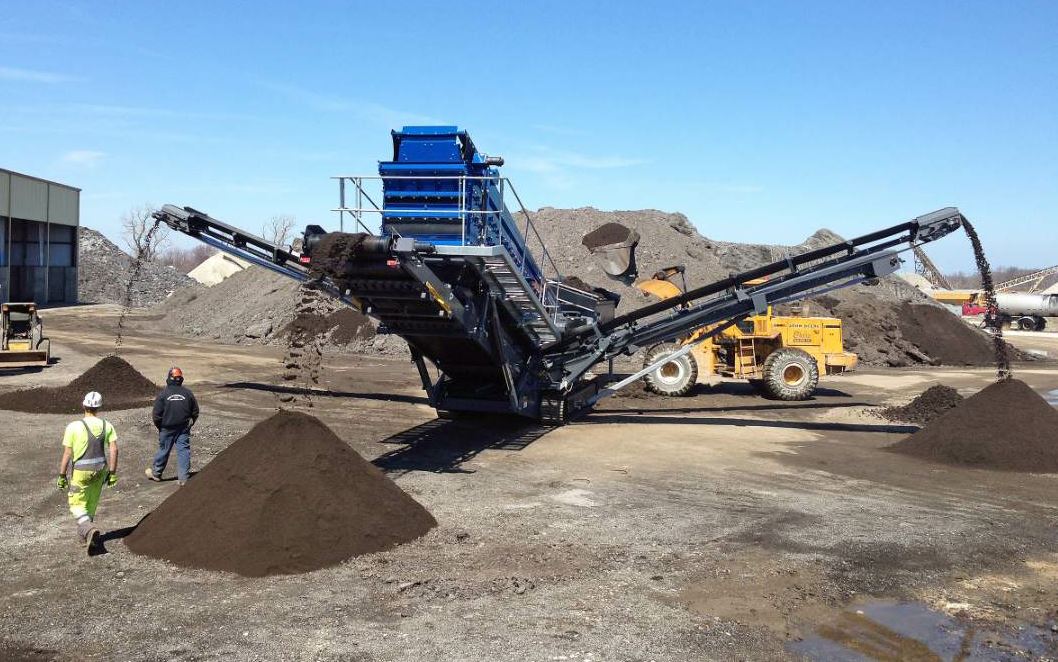
As an environmentally responsible industry, the asphalt community is a tough act to follow. The National Asphalt Pavement Association (NAPA) has stated in its Annual Warm-Mix and Recycled Asphalt Survey that, “[a]s early as 1993, the Environmental Protection Agency and Federal Highway Administration identified asphalt pavement as America’s No. 1 recycled product in a report to Congress.
Over the years the asphalt pavement industry has been a constant innovator in finding ways to make its products more environmentally friendly—from reclaiming old asphalt pavements and rejuvenating their component parts for use in new pavements to the incorporation of recycled materials to the adoption of energy-saving warm-mix asphalt technologies.”
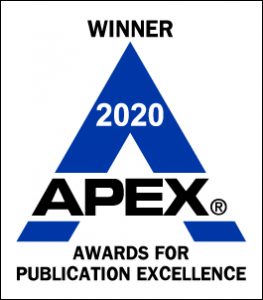 With this industry recycling upwards of 78 and 79 million tons of material per year, we have a stellar track record. But we don’t rest on our laurels. The members of the asphalt industry are known to innovate and keep striving for better results.
With this industry recycling upwards of 78 and 79 million tons of material per year, we have a stellar track record. But we don’t rest on our laurels. The members of the asphalt industry are known to innovate and keep striving for better results.
When state departments of transportation (DOTs) balked at the use of recycled materials, referring to them as waste or substandard, industry responded with research, facts and innovations for shoring up the use of materials. Any problem can be solved, even if the problem is merely perception. And when the problem really exists, such as aged binder within the reclaimed product, well, we came up with a way to rejuvenate the binder. We came up with ways to protect the binder from the dryer flame as we add RAP to mixes. As I said, any problem can be solved when an industry such as this one gets together at the table.
Another worry some DOTs brought to the table was the introduction of RAP of unusual size (R.O.U.S.). Yes, I just channeled the late William Goldman. The original equipment manufacturers (OEMs) in our midst had an answer for that one, offering screening solutions to shake RAP into different size stockpiles. Fractionated and separated RAP meant more precise mix designs with this black gold.
A number of OEMs are committed to bringing recycle solutions to producers. We reached out to crushing equipment OEMs specifically to address what’s coming up in 2019 and how they can help producers respond to DOT wishes now. Take a look at the next few pages to see how these respondents could help you with your recycling goals.
Tim Gonigam, President of Astec Mobile Screens

Tim Gonigam, President of Astec Mobile Screens
Q: What is your full name and title at KPI-JCI and Astec Mobile Screens?
A: Tim Gonigam, President of Astec Mobile Screens
Q: How long have you, personally, been involved in the aggregate industry?
A: I have been involved in the aggregate industry for 35 years.
Q: What is your favorite aspect of the aggregate industry?
A: My favorite part of the aggregate industry is being able to provide solutions to a customer’s problem while also trying to reduce their costs.
Q: What pieces of equipment does KPI-JCI and Astec Mobile Screens manufacture for the recycling arm of the aggregate/asphalt industry?
A:
• ProSizer® Series impactor plants
• track crushers and screens
• Fold ‘n Go portable screens
• horizontal screens
• incline screens
• high frequency screens
• multi-frequency screens
Q: What would you say will be the top three catalysts in North America driving asphalt mix producers to take on their own recycling crushing and screening production/activities during 2019?
A: I believe the top three catalysts will be production costs, being able to recycle on-demand without stockpiling, and having better control of gradation and mixes.
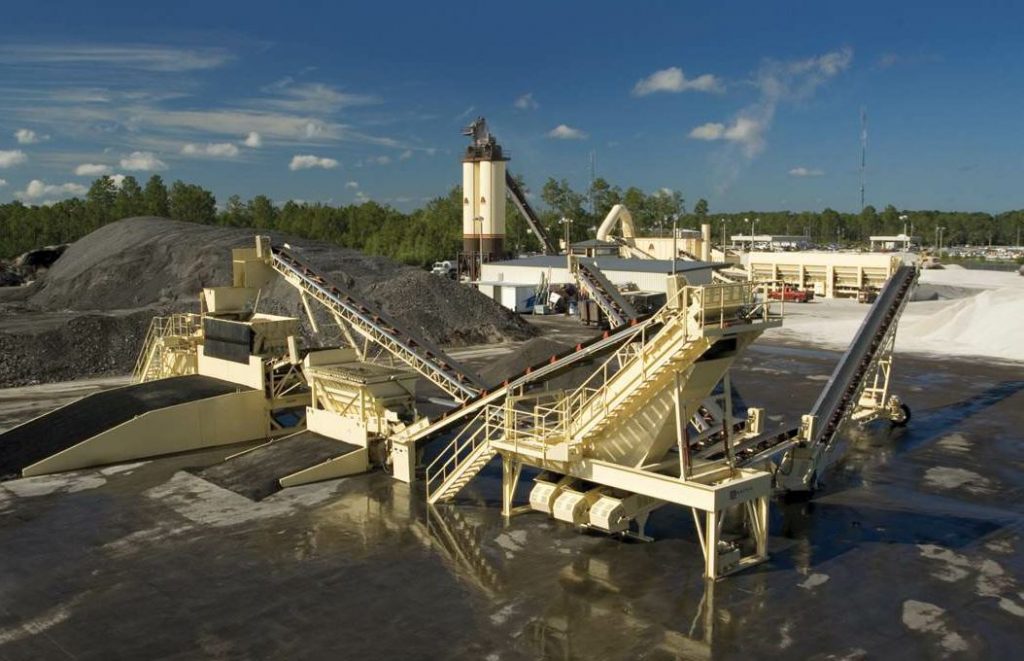
P&S Paving uses two separate feeders, allowing them to feed to either the screen or impactor first, depending on the material. This process keeps more asphalt on the rock and extends the wear life of the equipment. They also break the product back down into two sizes, giving them better control of their mix designs. Photo courtesy Astec Mobile Screens.
Q: Many state agencies wrestle with the concept of increasing the percentage of recycled asphalt pavement (RAP) in mixes while maintaining excellent pavement performance. How do you guide KPI-JCI and Astec Mobile Screens’ clients in equipment use for providing high quality fractionated RAP?
A: The best thing clients can do is treat RAP the same way they would treat virgin aggregate. This involves breaking the RAP back down to its original size, making sure to have controls in place to separate the products based on binder types or content, and also minimizing the segregation in stockpiles.
Q: Many state agencies also wrestle with the use of recycled asphalt shingles (RAS) at any percentage at this time. What is your prediction concerning the use of RAS going into 2019, and does KPI-JCI and Astec Mobile Screens provide a grinding solution for this material?
A: I believe the use of RAS will continue to decline in 2019 until state agencies and end users are more comfortable with the results they achieve. Astec Mobile Screens has had some experience with screening shingles and our sister company, Peterson Pacific Corporation, builds grinders for RAS processing.
Q: For the asphalt mix producer processing larger chunks of asphalt millings for use in future mixes, what type and arrangement of crushing and screening equipment do you recommend?
A: Any time you are processing large chunks of asphalt, they need to go through a horizontal shaft impactor first. We believe the best system incorporates a horizontal shaft impactor with a vibrating grizzly feeder and a screen with a separate belt feeder. If you are processing 6” minus RAP, it is typically fed through the belt feeder first and then to the screen to remove as much product as possible before crushing. Large slabs should go directly to the impactor and then onto the screen.
Q: Do you have a client you give as an example of the above arrangement? How did that client’s production tonnage or quality increase with the arrangement you describe?
A: P&S Paving is a good example of a system like this. They have the flexibility of processing both slabs and millings without generating excess fines. The producer uses two separate feeders, allowing them to feed to either the screen or impactor first, depending on the material. This process keeps more asphalt on the rock and extends the wear life of the equipment. They also break the product back down into two sizes, giving them better control of their mix designs.
Q: What is the KPI-JCI and Astec Mobile Screens philosophy regarding the re-use of materials in the road-building sector of the construction industry?
A: Many people associate the term “recycle” with material that is second-rate, poor-quality used material. Due to this misconception, RAP has been treated as an invaluable waste product, with little time and money being invested into its processing. In reality, any recycled product is worth what it replaces and its value can be enhanced if the material is processed and treated like virgin material. Because it can be processed and used to replace virgin aggregate and liquid asphalt, there is great value in this recycled product.
Evan Clarke, Vice President of Kleemann

Evan Clarke, Vice President of Kleemann
Q: What is your full name and title at Kleemann?
A: Evan Clarke, vice president, Kleemann
Q: How long have you, personally, been involved in the aggregate industry?
A: As vice president North America for Wirtgen Group’s Mineral Technologies operating company, Kleemann, I have worked since 2007 to introduce the Kleemann brand to the United States market. I began with Wirtgen Group in 2000, when I launched Kleemann U.K. as marketing director, introducing the Kleemann brand to the United Kingdom market.
Prior to Kleemann, I worked at Powerscreen International from 1990, heading up the Aggregate Washing Division, responsible for the manufacturing, design and installation of all aggregate washing plants, traveling the globe, meeting dealers and customers, and designing systems and solutions.
Earlier I worked for shipbuilder Harland and Wolff in the drawing office, and then as a manager for its Ship Repair Division, in Belfast, Northern Ireland. I worked at the same yard where the Titanic was built and from which it was launched in April 1912. I am a native of Belfast.
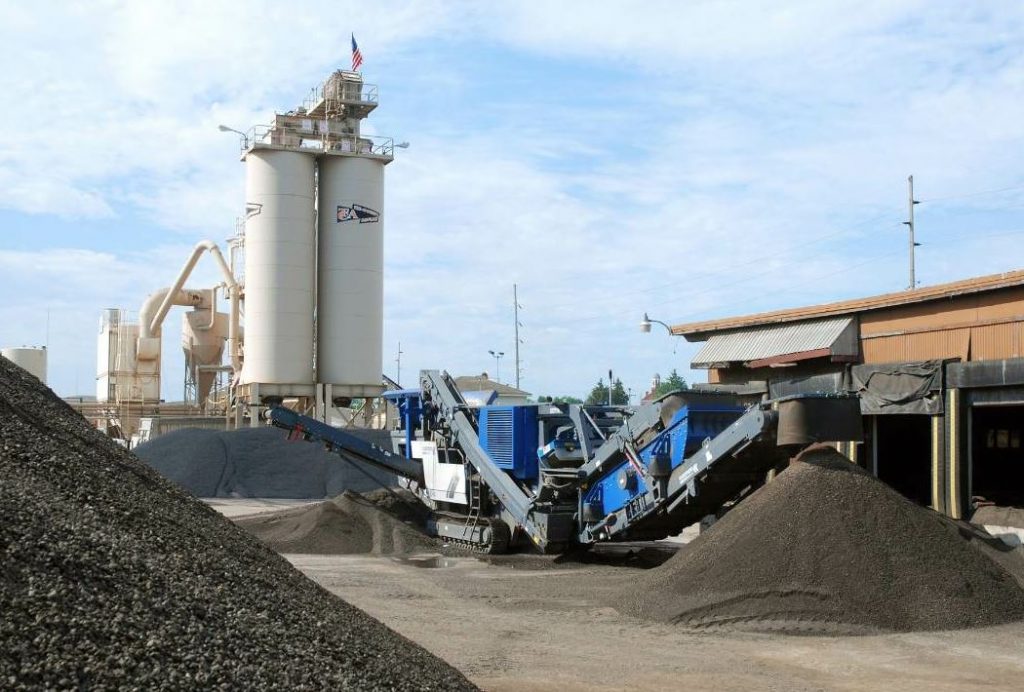
The Kleemann Mobirex MR 110 Z S Evo mobile impact crusher has a compact enough footprint to fit right into the asphalt plant yard. Photo courtesy Kleemann.
Q: What is your favorite aspect of the aggregate industry?
A: It’s exciting to be part of changing the market in North America. Not only are we relatively new to the North American market, but we are a technology leader. Many of the familiar brands and processes have become a bit too familiar and it’s fun to bring something innovative and new to the market.
Engaging with customers about how they process materials and approach jobs with new technology is something that continues to motivate us. Providing the tools AND the expertise gives us partnerships that keep us Close to our Customers.
Q: What pieces of equipment does Kleemann manufacture for the recycling arm of the aggregate/asphalt industry?
A:
• MR 110 Z Si EVO2
• MR 130 Z Si EVO2
• MC 100 Ri EVO
• MC 110 Ri EVO
• MC 110 Zi EVO
• MS 702i EVO
• MS 952i EVO
• MS 703i EVO
• MS 953i EVO
Q: What would you say will be the top three catalysts in North America driving asphalt mix producers to take on their own recycling crushing and screening production/activities during 2019?
A: The need to process or beneficiate milled asphalt into an engineered, value-added aggregate material is a requirement for increased utilization of RAP in mixes. Blended stockpiles of same-sized RAP aggregate provide, on average, consistent residual asphalt contents of RAP, important for meeting stringent state DOT specs. These are among the reasons asphalt producers are purchasing their own impact and jaw crushers for their plants.
Also, we continue to see increased demand for Kleemann in our dealers’ rental fleets as well as retail sales. Crushing and screening continues to be a rental-oriented market. Many contractors will rent machines before converting the asset to a purchase for several reasons, including workload balance.
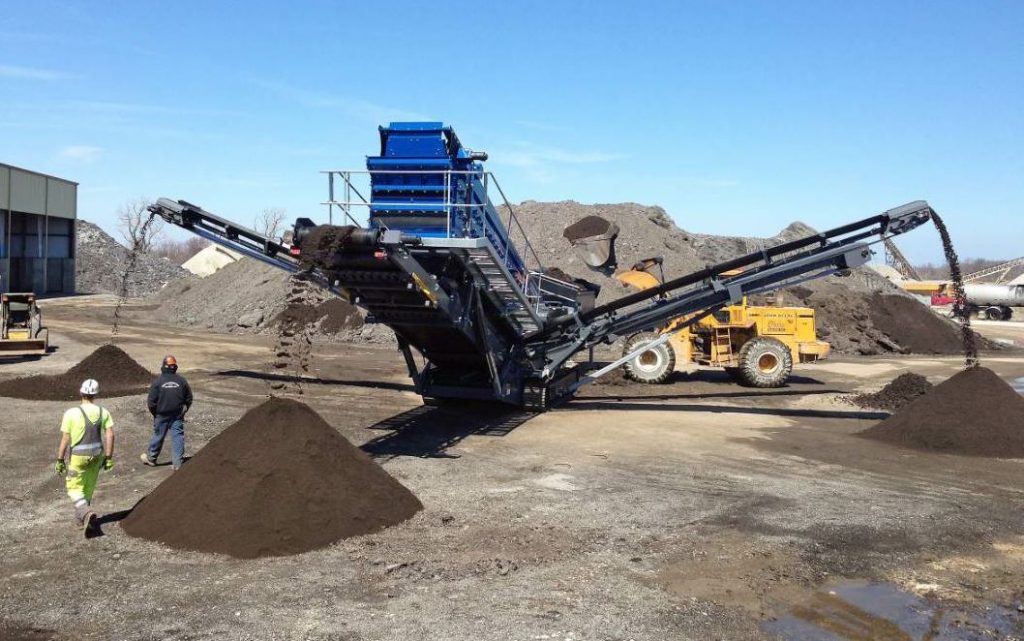
Here we see a stockpile of reclaimed asphalt pavement (RAP) sized by the Kleemann Mobiscreen. Photo courtesy Kleemann.
Q: Many state agencies wrestle with the concept of increasing the percentage of recycled asphalt pavement (RAP) in mixes while maintaining excellent pavement performance. How do you guide Kleemann’s clients in equipment use for providing high quality fractionated RAP?
A: With their capability to produce accurately-sized, cubical-shaped end-product, mobile impact crushers work well as stand-alone plants, or they can add significant productivity to any operation, working in tandem with a jaw crusher or screen plant.
They are an ideal choice for smaller-scale recycling operations, on-site recycling, and for tight-space urban and roadside recycling of C&D, concrete and asphalt. These tracked crushers can process 100 to 500 tons per hour.
Impact crushers are preferred for processing RAP, as residual asphalt in RAP has the potential to clog or gum up jaw or cone crushers. That’s not a problem with impactors, which break up product by internal rotors, which hurl it against a crusher apron, on which it breaks and drops to a conveyor.
While the basic principle of an impact crusher has remained relatively unchanged for years, the advancement of process and control technology has greatly increased the productivity of these units.
The use of the Kleemann Continuous Feed System using monitoring technology such as sonic sensors to monitor the fill level of the crusher, and adjust the feed rate accordingly, is just one example.
Operator interfaces are being substantially improved. Fully hydraulic adjustments that can be operated through a touch panel user interface, with many similarities to your smart phone, are a great example. This technology allows the user to not only adjust the gap setting from the operator panel, but also gives full insight to the status of the equipment, fuel efficiencies, and drive efficiencies.
Kleemann’s new Spective operator interface is intuitive, easy to understand, and supports the operator in his work, as it’s simple to use. The user is supported right from the beginning with the operation of the touch panel. He or she is guided step-by-step through the startup process, then the system starts.
With Spective, on the start screen the operator sees a diagram of the entire plant with its adjustable functions. The desired function is selected and the operator is guided through all necessary steps with clear instructions. If a fault occurs during machine operation, a fault diagnosis is shown on the display. Downtimes are reduced with fault localization, a description of the fault, and tips on its elimination. The 12-inch touch panel is not susceptible to dust and is easy to read with the adjustable light and contrast settings, even in strong sunlight. It responds to the touch of fingers, tools, pens or gloves.
Q: Many state agencies also wrestle with the use of recycled asphalt shingles (RAS) at any percentage at this time. What is your prediction concerning the use of RAS going into 2019, and does Kleemann provide a grinding solution for this material?
A: We do not market equipment for grinding shingles, which often is done by a separate waste material processing firm apart from the asphalt producer.
Q: For the asphalt mix producer processing larger chunks of asphalt millings for use in future mixes, what type and arrangement of crushing and screening equipment do you recommend? In your experience, what is the benefit of this arrangement?
A: In a mobile crusher, the Kleemann Continuous Feed System (CFS) optimizes crusher throughput, but when used with multiple Kleemann mobile crushers, is controlled via an interlink network that manages multiple crushers and allows them to work together at maximum production.
In a single mobile crusher, with the CFS, each step the material goes through in the mobile crusher is wider than the width of the one before it, eliminating choke or wear points. As the crusher is diesel direct-driven via a fluid coupler, feedback is provided from the engine to the controlling computer, allowing indications when the crusher may be getting overloaded.
The continuous feed system makes an essential contribution to the high performance of the plant. Depending on the crusher utilization level, the conveying frequencies of the feeder trough and the grizzly are controlled independently of one another and thus guarantee a continuous and optimized feeding system.
Thus CFS provides a more equal loading of the crushing area, significantly boosting performance. It maintains a choke feed to the crusher, eliminating stops and starts of the feed system, improving production, material shape and wear. When used with multiple Kleemann crushers, the Kleemann CFS is controlled via an interlink network.
Q: What is the Kleemann philosophy regarding the re-use of materials in the road-building sector of the construction industry?
A: RAP combines a high residual asphalt cement content with aggregate that has already been acquired, permitted, shot, processed to meet state specifications, and transported. This makes RAP a valuable product to the asphalt producer.
Producers apply different monetary values to recycled asphalt. Some value RAP the same as other aggregates, others up to four times that. This is why it’s so important to manage the transportation, storage, processing and utilization of recycled asphalt materials.
The re-use of milled and demolition asphalt has many advantages. The process is taking a worthless “demolition waste product” and re-purposing it as a valuable finished product. Once milled asphalt is crushed and reclassified by size, the asphalt producer can use 15 to 25 percent recycled material in its new asphalt mixes. This helps the producer save money on new raw aggregate products, as well on purchase of asphalt cement.
Once asphalt millings are removed from the road surface, the contractor needs to find a place to store the millings or waste products until they can be reused. Recycling asphalt, then, is not only a cost saving to the producer, but is environmentally responsible as well.
Matthew Dickson, Business Line Director of EvoQuip
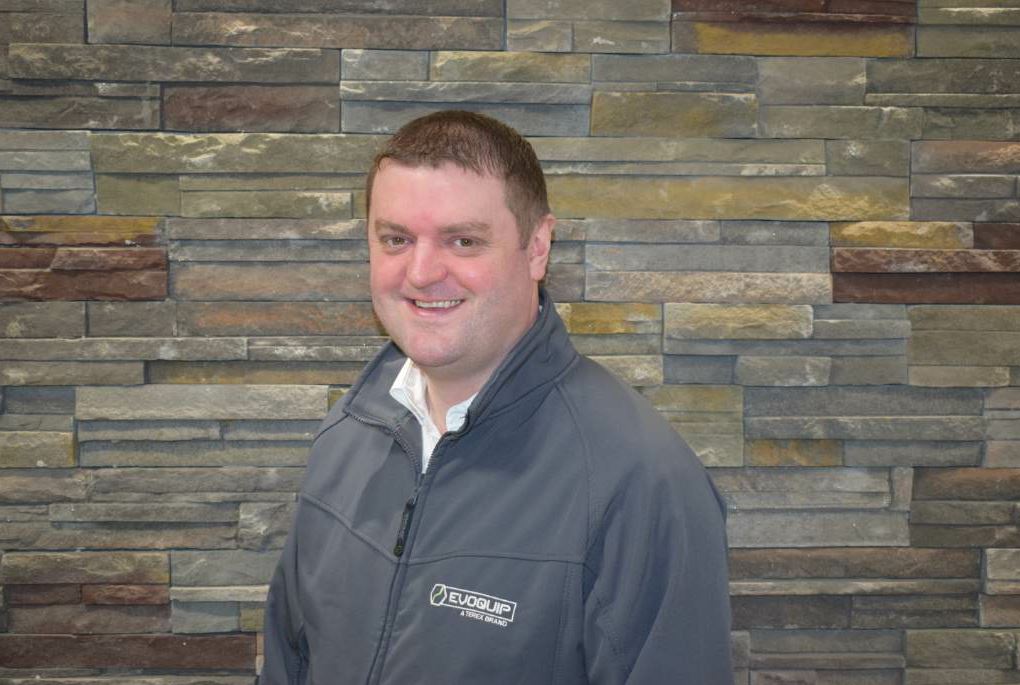
Matthew Dickson, Business Line Director of EvoQuip
Q: What is your full name and title at EvoQuip?
A: Matthew Dickson, Business Line Director, EvoQuip
Q: How long have you, personally, been involved in the aggregate industry?
A: I joined Terex as a graduate engineer 15 years ago. My career steadily progressed and I held the role of Engineering Manager Crusher Platforms for six years where I led the Design Department of approximately 50 staff designing many brand new innovative machines, which were suitable for many applications including the aggregate industry.
For the past three years I have held the role of Business Line Director for EvoQuip, which is a new brand within Terex that offers a compact range of crushing and screening equipment. These compact machines are suitable for many applications including aggregate production and recycling among others.
Q: What is your favorite aspect of the aggregate industry?
A: With my engineering background I really love the machines—investigating the needs of customers, researching and incorporating new technologies, seeing them come together from concept, to design, to build, and finally to them working and making a real impact to people. I have a real passion for the equipment and strive to continually improve the features to benefit our customers.
I also love interacting with our customers and seeing how EvoQuip helps them. We provide application based solutions and it is very rewarding seeing these solutions making improvements to the customer’s product and their business. I get a real sense of achievement from seeing the EvoQuip machines in the field and gaining traction as a new brand.
Q: What pieces of equipment does EvoQuip manufacture for the recycling arm of the aggregate/asphalt industry?
A:
• Cobra 230 open circuit & 230R closed circuit impact crusher
• Cobra 290 open circuit & 290R closed circuit impact crusher
• Colt 600 Scalping screen
• Colt 800 Scalping screen
• Colt 1000 Scalping screen
• Bison 280 Jaw crusher
Q: What would you say will be the top three catalysts in North America driving asphalt mix producers to take on their own recycling crushing and screening production/activities during 2019?
A: In my opinion, the top three catalysts are:
• The desire to improve their competitiveness by being able to reuse some of the recycled product which reduces costs of waste disposal;
• State legislation regarding the percentage of recycled asphalt allowed; and
• Reducing the use of natural resources by processing a “waste,” and incorporating it into a saleable product there by saving on raw material costs.
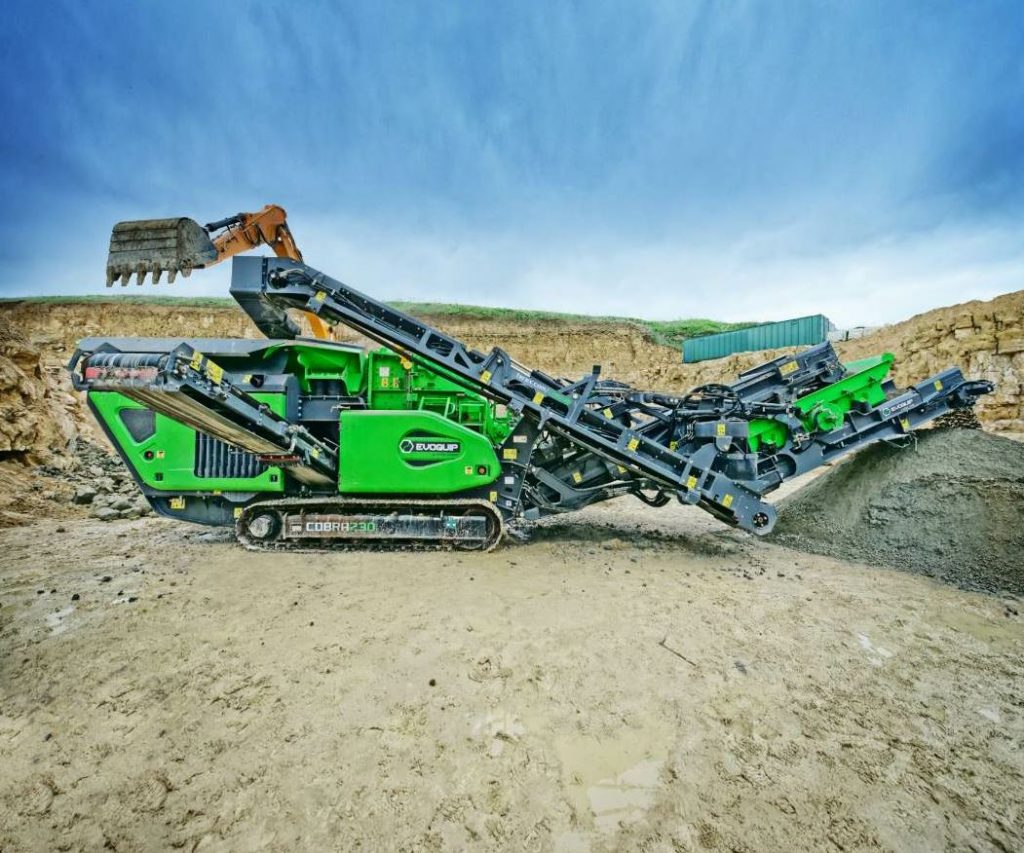
EvoQuip offers closed circuit impactors, the Cobra 230R (pictured) and Cobra 290R, which are combination crushing and screening plants. These machines can be used to achieve up to two products, according to the manufacturer. Photo courtesy EvoQuip.
Q: Many state agencies wrestle with the concept of increasing the percentage of recycled asphalt pavement (RAP) in mixes while maintaining excellent pavement performance. How do you guide Terex Materials’ clients in equipment use for providing high quality fractionated RAP?
A: Each state has different rules on the percentage of recycled asphalt that can be reused. At EvoQuip, we help advise customers on how best to configure their equipment to achieve the desired product sizes. We provide our customers with application based solutions to achieve the required product split that can be reused in line with local state legislation.
Q: Many state agencies also wrestle with the use of recycled asphalt shingles (RAS) at any percentage at this time. What is your prediction concerning the use of RAS going into 2019, and does Terex Materials provide a grinding solution for this material?
A: EvoQuip does not provide a solution for this however our sister brand CBI does.
Q: For the asphalt mix producer processing larger chunks of asphalt millings for use in future mixes, what type and arrangement of crushing and screening equipment do you recommend? In your experience, what is the benefit of this arrangement?
A: It is dependent on what the customer’s requirements are for product sizing, the number of products they are trying to make and the capacity they want to achieve.
EvoQuip offers closed circuit impactors, the Cobra 230R and Cobra 290R, which are combination crushing and screening plants. These machines can be used to achieve up to two products.
For higher capacity applications we suggest using the standard Cobra 230 or Cobra 290 impact crushers with one of our Colt screening units. With a range of media and apertures available it provides the customer with the ability to adapt to suit differing applications.
We also provide excellent aftercare in terms of parts, technical support, and training ensuring that the customer is fully supported and can maintain optimum output.
Q: What is the EvoQuip philosophy regarding the re-use of materials in the road-building sector of the construction industry?
A: Our Purpose: To help improve the lives of people around the world.
Our Mission: To provide solutions to our Machinery and Industrial Product customers that yield superior productivity and return on investment. EvoQuip is invested in making the world a better place to live by working to serve the needs of our customers, investors and team members. We continuously search for new and better ways of doing things with a focus on eliminating waste and increasing on-site recycling.
Gerald Hanisch, Founder and Owner of Rubble Master
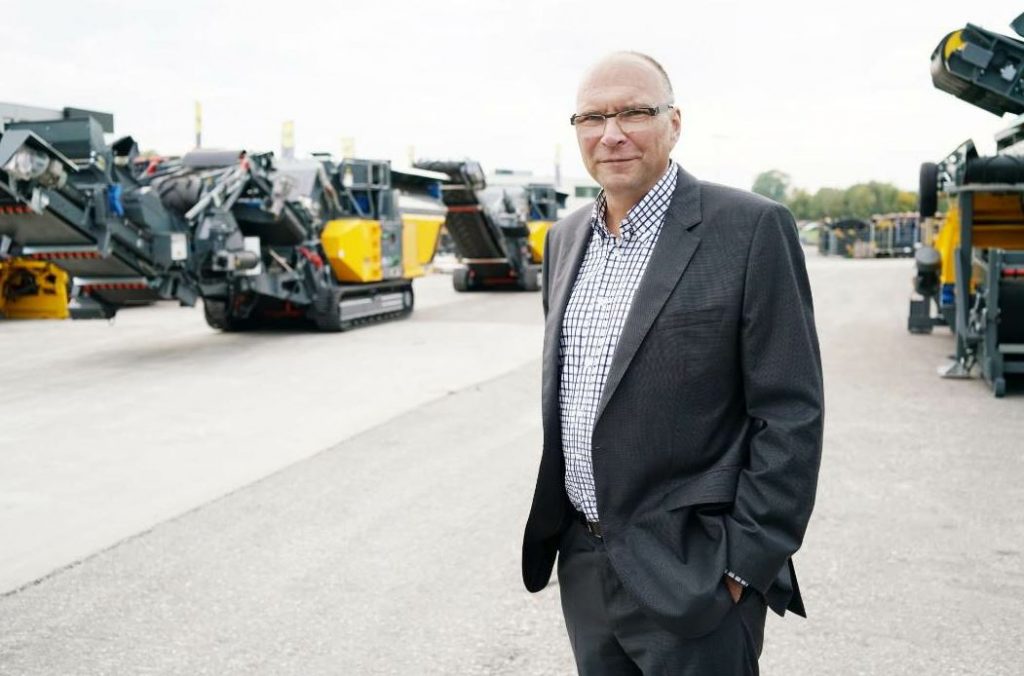
Gerald Hanisch, Founder and Owner of Rubble Master
Q: What is your full name and title at Rubble Master?
A: Gerald Hanisch, founder and owner
Q: How long have you, personally, been involved in the aggregate industry?
A: more than 3 decades
Q: What is your favorite aspect of the aggregate industry?
A: My favorite aspect is the process of exposing customers to the Rubble Master way of thinking. We look at the world and the industries we serve differently. Exposing brand-new or lifelong aggregate producers to more profitable solutions for material disposal and production is what drives RM everyday—it’s who and what we are.
Q: What pieces of equipment does Rubble Master manufacture for the recycling arm of the aggregate/asphalt industry?
A:
• mobile crushers
• tracked scalping screens
• tracked incline screens
• tracked stacking conveyors
Q: What would you say will be the top three catalysts in North America driving asphalt mix producers to take on their own recycling crushing and screening production/activities during 2019?
A: First, asphalt is one of the most recycled materials in the United States and the volume keeps increasing every year. The waste asphalt volume each producer generates justifies owning a plant. There are many different impactor plants out there that fit to each asphalt producer’s capacity needs.
Second, doing asphalt recycling in-house instead of subbing it out keeps your cash in-house. It makes also your own operation more efficient as you keep your own crew busy when business is slow or during off-season.
Third, it opens up new in-house solutions. Crushers and screens become more mobile and compact, which allows road-builders to take their plant to job-sites and other yards and process other material which increases the utilization and allows them to harness more revenue sources than crushing at their asphalt plant.
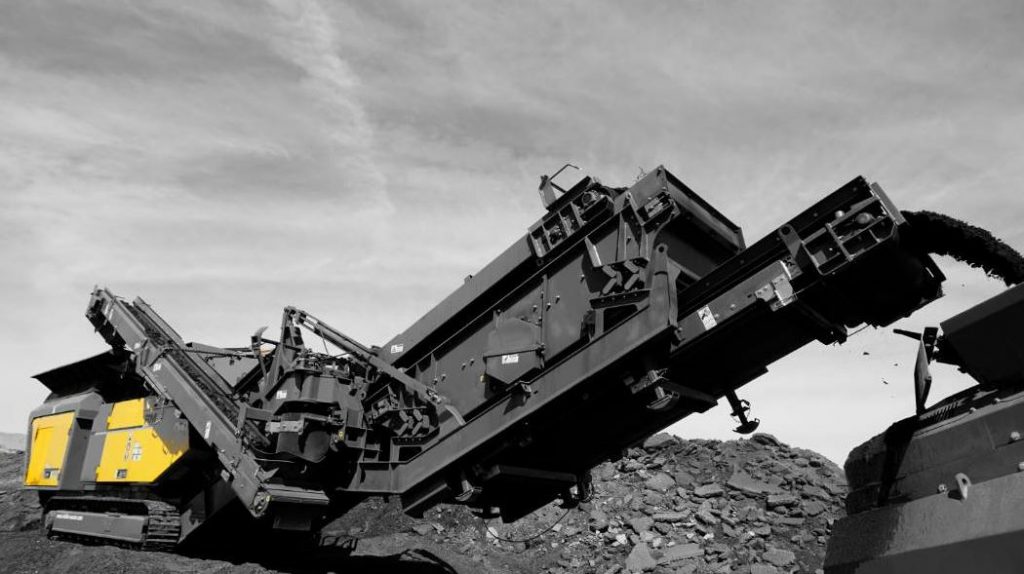
The RM 120GO! from Rubble Master
Q: Many state agencies wrestle with the concept of increasing the percentage of recycled asphalt pavement (RAP) in mixes while maintaining excellent pavement performance. How do you guide Rubble Master’s clients in equipment use for providing high quality fractionated RAP?
A: Rubble Master has spearheaded the industry for years by promoting high quality finished products. Material shape, final gradation and cleanliness are key for market acceptance.
Therefore, it is important to use the right equipment to get to the desired finished products and to adapt the right job-site logistics to avoid any contamination. Rubble Master’s experienced dealer network, close customer support and on-site product trainings will insure that customers get their desired end products.
Q: Many state agencies also wrestle with the use of recycled asphalt shingles (RAS) at any percentage at this time. What is your prediction concerning the use of RAS going into 2019, and does Rubble Master provide a grinding solution for this material?
A: We don’t offer any grinding solutions but our screens are excellent at screening shingles.
Q: For the asphalt mix producer processing larger chunks of asphalt millings for use in future mixes, what type and arrangement of crushing and screening equipment do you recommend? In your experience, what is the benefit of this arrangement?
A: Processing millings is always more of a screening job than a crushing job. You will find that a high percentage of a millings pile doesn’t need to be crushed. In addition the small finished product is typically a challenge for every crusher’s on-board screening solution. To boost production and lower operating (wear) cost, it is recommended to tie in a separate screening plant. A tracked scalping screen prior to an impact crusher segregates already finished product from oversize. The oversize can then be fed into an impactor for further processing. Less fines inside the impact chamber will result in lower wear costs and also higher production performance.
Q: Do you have a client you give as an example of the above arrangement? How did that client’s production tonnage or quality increase with the arrangement you describe?
A: A large road builder in Boston found that screening a millings pile doesn’t leave a lot of oversize. There was no need for a 100,000-pound impact crushing plant to process what’s left.
They tied in a compact impactor to eliminate the little amount of oversize. The entire setup has a minimal footprint and leaves enough space in their yard for other equipment and trucks to move around.
Q: What is the Rubble Master philosophy regarding the re-use of materials in the road-building sector of the construction industry?
A: We firmly believe the days of disposing concrete and asphalt rubble are over and everybody should be able to participate in recycling construction debris. I founded Rubble Master in 1991 at a time when others were tentatively beginning to think about recycling C&D waste. I’ve always looked at the crushing industry differently. When I turned my sights to the larger spectrum of machines, I was unimpressed with what I saw. I didn’t understand why a machine had to be over 100,000 pounds. To be honest, I didn’t like the way the table was set, so I flipped over the table.
Today we develop, manufacture and sell compact crushers, which are more compact, quieter and easier to mobilize than any other crusher in the market but with the production capacities of big machines. This is what has made us the world market leader in mobile compact crushing.
